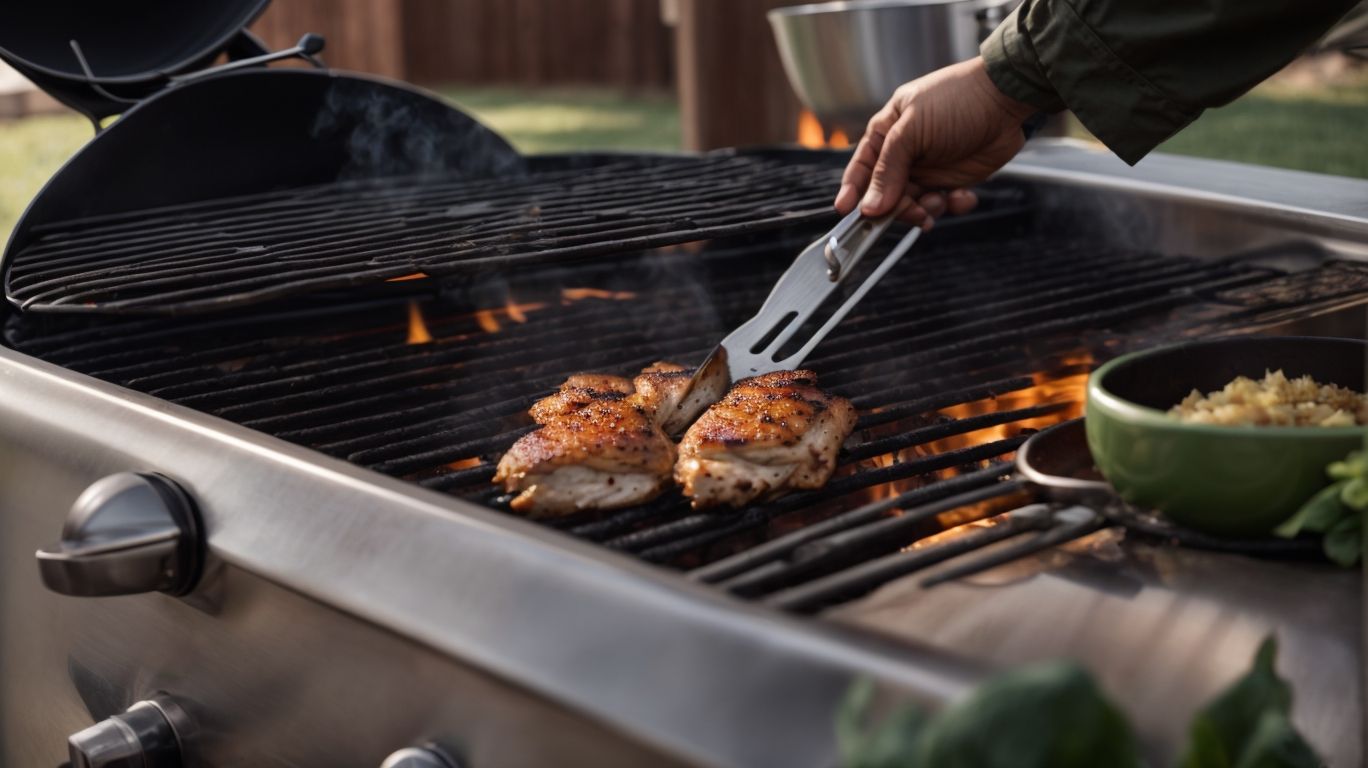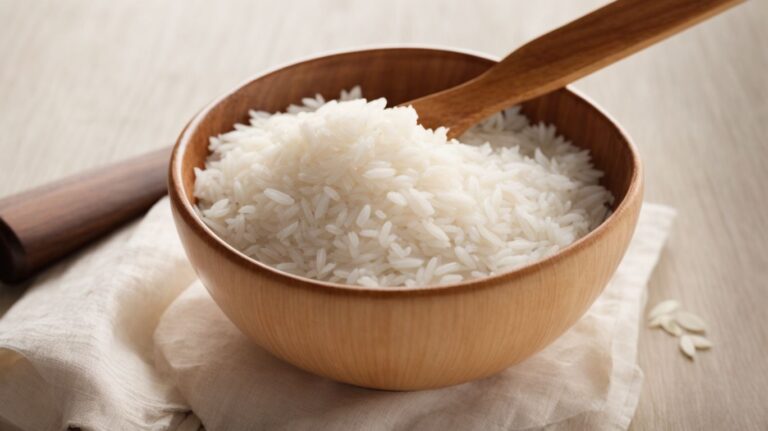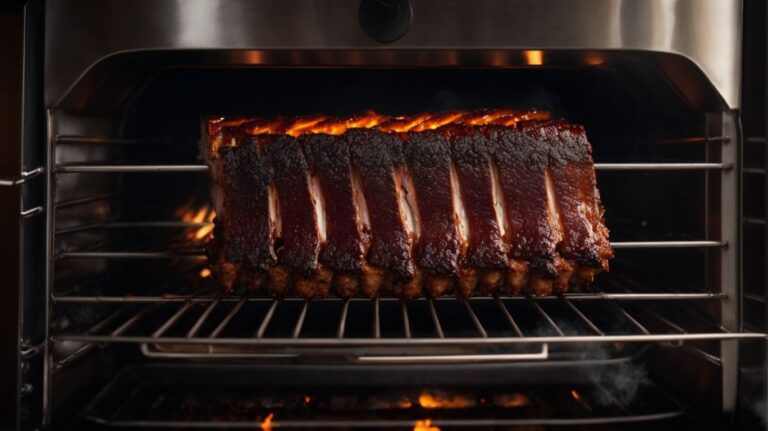How to Cook Chicken Thighs Under the Grill?
Are you looking to up your grilling game and impress your friends and family with some delicious chicken thighs? Look no further!
In this article, we will explore the benefits of grilling chicken thighs, the different types of grills you can use, how to prepare chicken thighs for grilling, the best temperature and cooking times, how to tell if your chicken is cooked perfectly, and even some tasty side dish suggestions.
Join me, Chris Poormet, as we dive into the world of perfectly grilled chicken thighs. Let’s get cooking!
Key Takeaways:
What are the Benefits of Grilling Chicken Thighs?
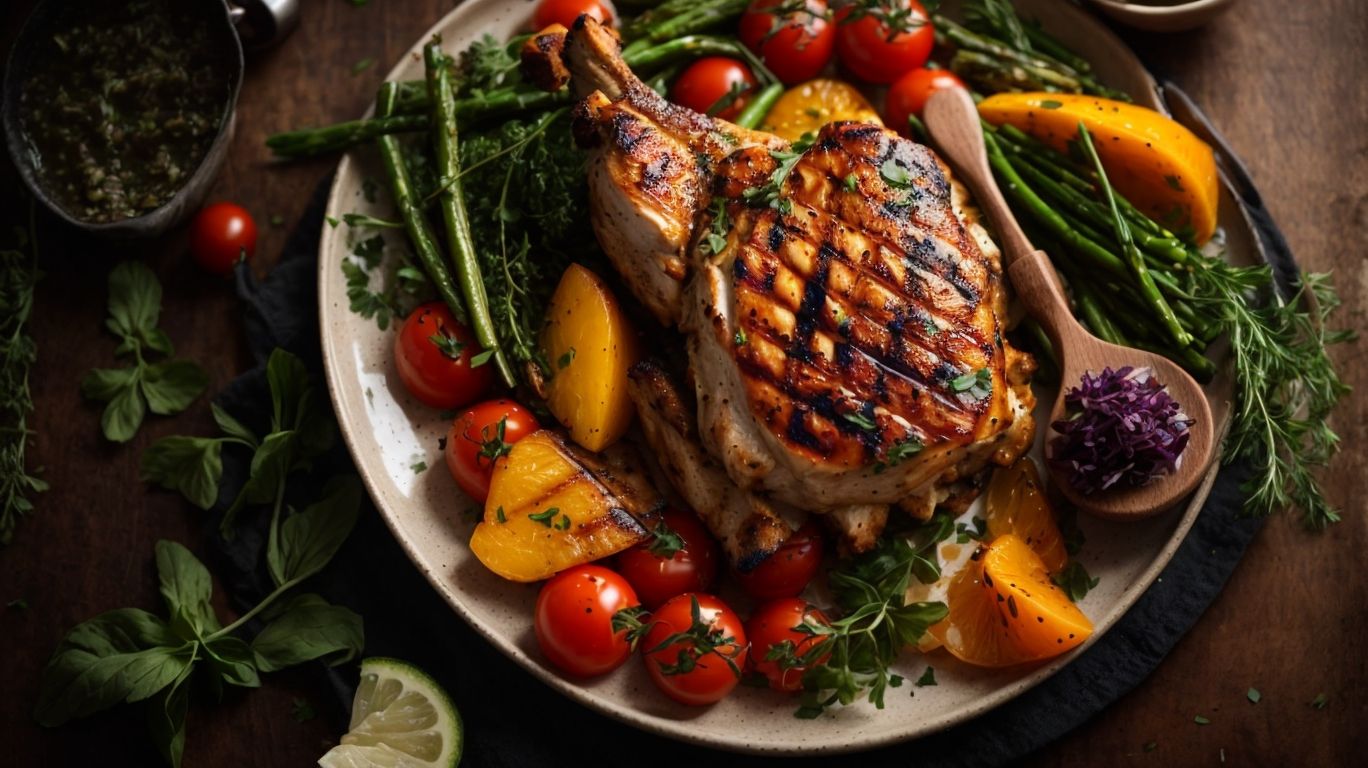
Credits: Poormet.Com – Joshua Young
Grilling chicken thighs offers a multitude of benefits, including enhanced juiciness, robust flavors, and a versatile recipe base that can be customized to suit various preferences.
When you grill chicken thighs, the intense heat creates a beautifully charred exterior, locking in the succulent juices, resulting in a tender and moist bite with every mouthful. The natural marbling of the thigh meat adds an extra layer of flavor, ensuring a delicious experience whether seasoned simply with salt and pepper or marinated in a complex blend of herbs and spices. The versatility of grilled chicken thighs allows you to serve them as a standalone dish, shred them for salads or tacos, or chop them up for sandwiches or wraps.
Healthier Option
Grilled chicken thighs are not just delicious but also a healthier option compared to other cooking methods due to reduced fat content and faster cooking times.
Along with being juicy and flavorful, grilled chicken thighs retain more of their natural moisture and tenderness, making them a top choice for those looking to maintain a balanced diet. The quick cooking times associated with grilling chicken thighs make them ideal for busy weeknights when you need a nutritious meal in a pinch. You can easily season them with herbs and spices to elevate their taste without adding excessive calories or unhealthy fats. Grilling helps to seal in the savory flavors, resulting in a dish that is both satisfying and beneficial for your overall well-being.
Adds Flavor
Grilling chicken thighs adds a delightful depth of flavor, especially when marinated with a blend of herbs, lemon, and other seasonings before hitting the grill.
Marinating the chicken thighs not only tenderizes the meat but also infuses it with layers of taste. The acidity of lemon helps in breaking down the proteins, making the chicken juicy and flavorful. When herbs like rosemary, thyme, or parsley are added to the marinade, they impart aromatic undertones that complement the smoky char from the grill.
One effective marinating technique is to let the chicken sit in the marinade for at least two hours or overnight to allow the flavors to penetrate the meat. Properly preheating the grill and oiling the grates ensures a perfect sear and prevents sticking.
Versatile Cooking Method
Grilling chicken thighs is a versatile cooking method that allows for endless flavor possibilities, making it a delicious and adaptable option for various recipes and culinary creations.
Whether marinated in zesty citrus for a refreshing summer meal or seasoned with aromatic spices for a cozy winter dish, chicken thighs can easily take on different flavor profiles with each recipe. From BBQ grilled thighs to savory garlic and herb marinades, the adaptability of this cut of meat shines through in its ability to complement a wide range of ingredients. With the right seasonings and techniques, you can transform simple chicken thighs into gourmet delights that will impress even the most discerning palates.
What are the Different Types of Grills?
In terms of grilling, there are several types of grills to choose from, including charcoal grills, gas grills, and electric grills, each offering unique features and cooking experiences.
Charcoal grills are beloved for imparting that traditional smoky flavor to your food, enhancing the authenticity of the grilling experience. The process of cooking over charcoal allows for high heat, ideal for searing and giving meats that sought-after crust.
On the other hand, gas grills bring convenience and precision to the table, with easy temperature control for consistent cooking results.
Electric grills are perfect for indoor or compact spaces, offering a hassle-free, plug-and-play cooking solution that is quick and efficient.
Charcoal Grill
A charcoal grill is a classic choice for grilling enthusiasts, known for imparting rich smoky flavors to dishes and providing a traditional grilling experience.
One of the key features that sets a charcoal grill apart is its ability to infuse food with that unmistakable smoky taste that many grilling aficionados crave. When charcoal briquettes or lump charcoal are lit and slowly burn, they produce a distinct aroma and flavor that elevates the taste of meats, vegetables, and even fruits cooked on the grill.
This smoky essence adds complexity and depth to the dishes, creating a unique culinary experience that cannot be replicated with other cooking methods. The process of grilling over charcoal allows for precise control of temperatures and heat distribution, resulting in perfectly seared meats with a flavorful char that seals in juices.
Gas Grill
A gas grill offers convenience and consistent heat distribution, making it an ideal choice for quick and efficient grilling sessions using propane or natural gas as fuel.
One of the key advantages of using a gas grill is the ease of use it provides. With just a push of a button, you can ignite the grill and start cooking, eliminating the need for charcoal or wood preparation. The even heat distribution in gas grills ensures that your food cooks uniformly, reducing the risk of hot spots or unevenly cooked meals.
Propane and natural gas, as fuel sources, offer the convenience of continuous supply without the need for refilling constantly. This means you can focus on your grilling sessions without worrying about running out of fuel midway through. The seamless integration of these fuels into gas grills further enhances the overall grilling experience, making it a hassle-free cooking option for outdoor enthusiasts.
Electric Grill
An electric grill offers the versatility of indoor and outdoor grilling options, making it a convenient and portable choice for those seeking a hassle-free grilling experience.
One of the remarkable features of electric grills is their compact size and lightweight design, which allows for easy transportation and set-up, ideal for picnics, camping trips, or tailgating events. Its plug-and-play functionality makes it user-friendly even for beginners, eliminating the need for cumbersome propane tanks or charcoal. Electric grills are also known for their consistent heat distribution, ensuring evenly cooked meals every time, whether you’re preparing juicy steaks in your backyard or grilling veggies in your kitchen. The adjustable temperature control further enhances the cooking precision, catering to various recipes and preferences.
How to Prepare Chicken Thighs for Grilling?
Preparing chicken thighs for grilling involves seasoning, marinating, or brining the meat to enhance its flavor and juiciness before it hits the grill for cooking.
Seasoning chicken thighs before grilling is a vital step as it imparts a depth of flavor to the meat. Common seasoning options include a mix of herbs, spices, and salt. To allow the flavors to penetrate the meat, it is recommended to season the thighs at least 30 minutes before grilling. Marinating, on the other hand, involves soaking the meat in a flavorful liquid mixture to tenderize and infuse it with added taste. A simple marinade can consist of olive oil, garlic, lemon juice, and herbs of your choice.
Seasoning Options
Seasoning options for chicken thighs vary from simple salt and pepper blends to complex spice mixtures, allowing you to customize the flavor profile according to your preferences.
Experimenting with herbs like rosemary, thyme, or oregano can add a fragrant earthiness to your grilled chicken. Citrus zest, such as lemon or lime, brings a zesty tanginess that brightens up the dish, while garlic and onion powders infuse a savory depth. Consider curry powder for exotic undertones or paprika for a mild, smoky flavor. For a kick of heat, cayenne pepper or chili powder can dial up the spice factor. The beauty of seasoning lies in the endless combinations you can create to elevate the taste of your chicken thighs.
Marinade Options
Marinade options for chicken thighs encompass a wide range of choices, including herb-infused blends, citrus-based marinades, and flavorful mixtures that enhance the taste and juiciness of the meat.
When opting for herb-infused blends, consider versatile combinations like rosemary and thyme for a fragrant profile that complements the natural flavors of the chicken. On the other hand, lemon-infused marinades offer a zesty kick that brightens the dish and tenderizes the meat. Experimenting with different ingredients such as garlic, honey, or soy sauce can elevate the overall taste profile, bringing out a harmonious blend of savory and tangy notes.
Brining Options
Brining options for chicken thighs involve soaking the meat in a seasoned solution to impart moisture, tenderness, and enhanced flavors before grilling, resulting in succulent and flavorful grilled dishes.
One major benefit of brining chicken thighs is the enhanced moisture retention during the grilling process. By allowing the meat to absorb the brine, it creates a barrier that keeps the chicken juicy and tender, even when exposed to high heat. Brining helps the flavors penetrate deeply into the meat, resulting in a more flavorful end product. Various brining solutions, such as saltwater brine, sugar-based brine, or herb-infused brine, offer different flavor profiles and levels of tenderness enhancement. Experimenting with different brining techniques can significantly impact the overall taste and texture of the grilled chicken.
What is the Best Temperature for Grilling Chicken Thighs?
Achieving the ideal temperature for grilling chicken thighs is crucial to ensure safe and flavorful cooking results, with the recommended internal temperature typically ranging between 165-175 degrees Fahrenheit.
Grilling chicken thighs at the correct temperature not only guarantees they are safe to eat but also helps retain their juicy tenderness and flavors. By using a meat thermometer, you can accurately track the internal temperature, ensuring that the chicken is thoroughly cooked without risking overcooking and drying it out.
For tender and succulent chicken thighs, aim for an internal temperature of at least 165 degrees Fahrenheit, as recommended by food safety guidelines. Some prefer to cook them up to 175 degrees for a firmer texture. Monitoring the temperature consistently throughout the grilling process is key to achieving delicious results.
How Long to Grill Chicken Thighs?

Credits: Poormet.Com – Randy Perez
Grilling times for chicken thighs vary based on factors such as bone-in or boneless cuts, with bone-in thighs typically requiring longer cooking times and occasional flipping to ensure even doneness and optimal flavors.
When grilling bone-in chicken thighs, it’s crucial to allow ample cooking time to ensure that the heat penetrates deep into the meat and cooks it thoroughly. Boneless thighs, on the other hand, cook quicker due to their thinner profile. Flipping the thighs during grilling not only helps in achieving an evenly browned exterior but also ensures that the meat cooks through uniformly.
Fluctuating grill temperatures can also impact cooking times, so it’s essential to monitor and adjust the heat as needed to prevent undercooking or charring. Using a meat thermometer to check for doneness indicators like an internal temperature of 165°F (74°C) is a foolproof way to guarantee perfectly grilled chicken thighs.
Bone-in Chicken Thighs
Grilling bone-in chicken thighs requires a slightly longer cooking time compared to boneless cuts, with the need for periodic flipping to ensure thorough cooking and achieving the desired level of doneness.
When grilling bone-in chicken thighs, it’s essential to preheat your grill to medium-high heat to create that perfect sear while locking in the juices. To achieve that deliciously crispy skin, start by seasoning your thighs generously with a mix of herbs and spices. Place the thighs on the preheated grill, skin side down, and resist the urge to move them initially to allow for proper browning. After a few minutes, flip the thighs using tongs to ensure even cooking on both sides.
Boneless Chicken Thighs
Grilling boneless chicken thighs is a quicker process compared to bone-in varieties, with less cooking time and minimal flipping required to ensure a succulent and well-cooked outcome.
When grilling boneless chicken thighs, the key is to focus on direct heat for shorter periods to lock in the juices and flavors. This method not only speeds up the cooking process but also maintains the natural tenderness of the meat.
Opting for boneless cuts provides a more uniform thickness, allowing for even cooking throughout without the hassle of contending with bones.
To keep your boneless chicken thighs moist, try marinating them beforehand, using a flavorful blend of herbs, spices, and citrus juices for enhanced taste.
How to Tell if Chicken Thighs are Cooked?
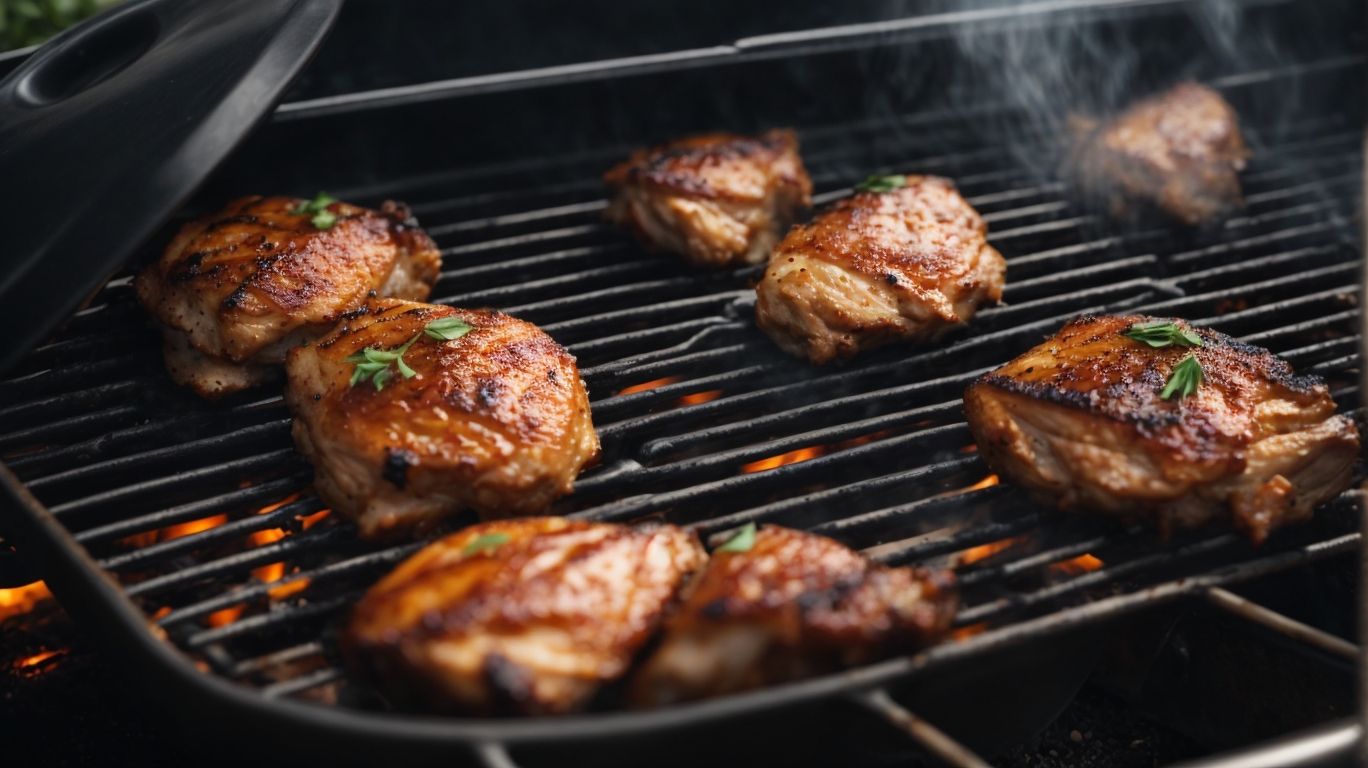
Credits: Poormet.Com – Patrick Smith
Ensuring that chicken thighs are cooked to perfection involves checking for key indicators such as reaching the recommended internal temperature, clear juices, and a tender texture to guarantee safe and flavorful results.
One of the most critical aspects in determining the doneness of chicken thighs is the internal temperature, which should read at least 165°F (74°C) on a reliable meat thermometer to ensure that harmful bacteria are eliminated.
When properly cooked, chicken thighs will release clear juices when pierced, signaling that the meat has reached a safe temperature and is no longer raw inside, enhancing both taste and safety.
A well-cooked chicken thigh will exhibit a tender texture, easily yielding to gentle pressure without any rubbery or pink areas, providing a delightful dining experience.
Tips for Perfectly Grilled Chicken Thighs
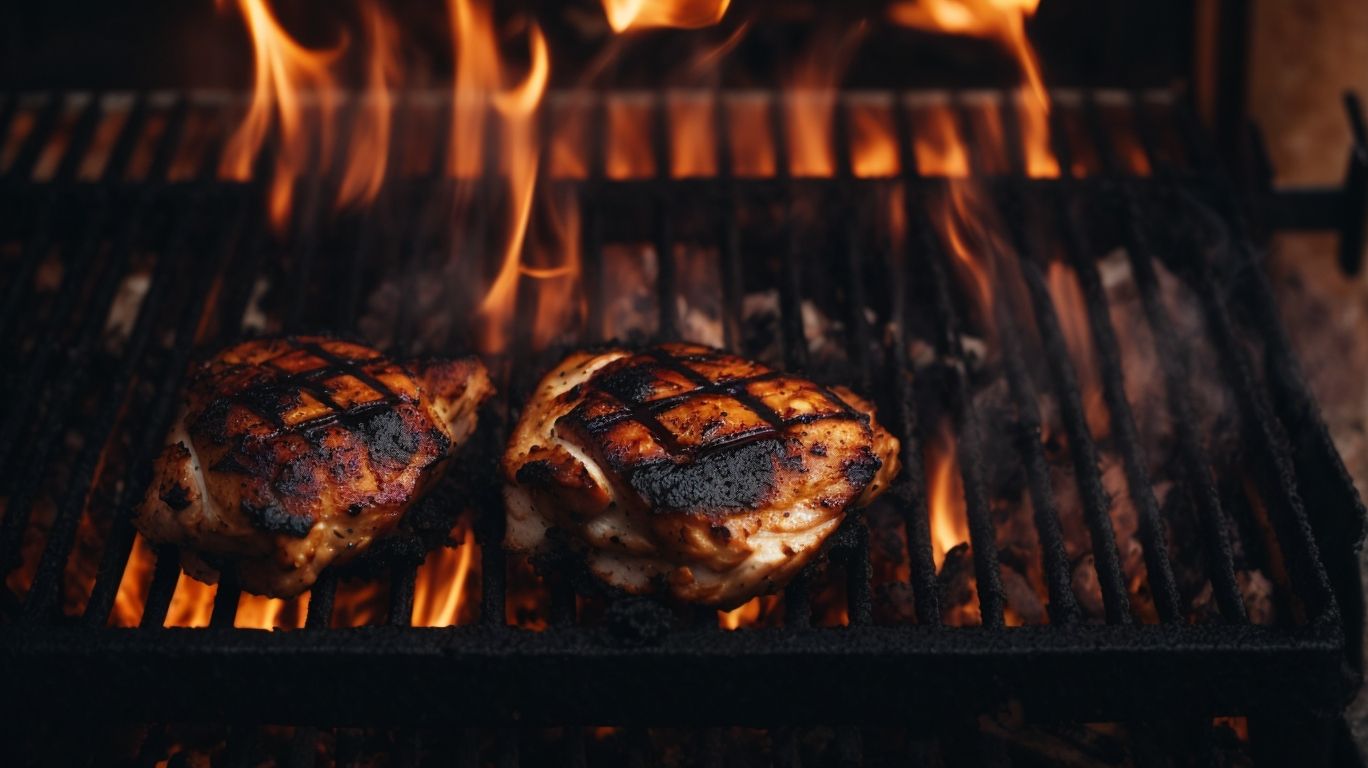
Credits: Poormet.Com – Noah Brown
Achieving perfectly grilled chicken thighs involves marinating for enhanced flavors, ensuring juiciness through proper cooking techniques, and mastering grilling tips to create a delectable and satisfying dish.
One of the key secrets to delicious grilled chicken thighs is the art of marinating. Marinating not only infuses the meat with flavor but also helps tenderize it. For optimal results, consider marinating the chicken thighs in a mixture of citrus juices, herbs, spices, and a touch of acid for at least a few hours or preferably overnight in the refrigerator to allow the flavors to penetrate the meat deeply.
What are Some Delicious Side Dishes to Serve with Grilled Chicken Thighs?
Pairing grilled chicken thighs with delicious side dishes can elevate your meal experience, with options ranging from classic BBQ accompaniments to potluck favorites that complement the main dish and create a diverse dining spread.
In terms of BBQ classics, you can never go wrong with a tangy homemade coleslaw or a creamy potato salad that balances the savory flavors of the chicken. For a touch of sweetness, consider serving up some baked beans loaded with crispy bacon bits, or try grilled corn on the cob with a sprinkle of chili lime seasoning for a flavorful twist. If you’re looking for potluck favorites, a refreshing cucumber tomato salad dressed in a zesty vinaigrette or a tray of crispy garlic parmesan roasted Brussels sprouts can add a burst of freshness to your meal.
Conclusion and Final Thoughts
Grilled chicken thighs offer a delightful culinary experience with their juicy texture, flavorful profiles, and versatile recipe options, making them a fantastic choice for meal prep and creating delicious meals to savor.
Grilled chicken thighs, whether marinated in a zesty citrus blend or seasoned with a smoky BBQ rub, boast a wonderful charred exterior that locks in the succulent juices within.
The beauty of these delectable cuts lies in their adaptability – pair them with a fresh summer salad, tuck them into tacos, or serve alongside roasted veggies for a wholesome feast.
In terms of preparing meals in advance, grilled chicken thighs are a game-changer. They can be pre-cooked and stored, ready to be added to salads, sandwiches, or even pasta dishes at a moment’s notice.
With their ease of preparation and crowd-pleasing appeal, it’s no wonder that grilled chicken thighs are a staple in meal planning for both casual dinners and special occasions.
Frequently Asked Questions
How to Cook Chicken Thighs Under the Grill?
Answer: Cooking chicken thighs under the grill is a quick and easy way to get a delicious and crispy meal on the table. Here are some commonly asked questions about this cooking method.
What is the best way to season chicken thighs for grilling?
Answer: You can season chicken thighs with a variety of herbs and spices, depending on your taste preferences. Some popular options include garlic, oregano, cumin, and paprika. Make sure to evenly coat the chicken for maximum flavor.
How long does it take to cook chicken thighs under the grill?
Answer: On average, chicken thighs take about 20-25 minutes to cook under the grill. However, the cooking time may vary depending on the thickness of the thighs. Use a meat thermometer to ensure they reach an internal temperature of 165°F.
Do I need to marinate chicken thighs before grilling them?
Answer: While marinating chicken thighs can add extra flavor, it is not necessary for successful grilling. As long as you season the thighs well, they will still turn out juicy and flavorful.
Can I grill chicken thighs without a grill?
Answer: Yes, you can still achieve similar results by using a grill pan on the stovetop. Simply heat the pan over medium-high heat and cook the chicken thighs for the same amount of time as you would on a grill.
How do I prevent chicken thighs from sticking to the grill?
Answer: To prevent chicken thighs from sticking to the grill, make sure to properly oil the grill grates and the chicken itself before grilling. You can also refrain from moving the chicken too much while it cooks, as this can cause it to stick.

